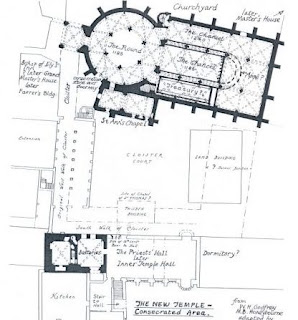Caoursin was born in 1430 in Douai in northern France, and joined the Order of Saint John (also know as the Hospitallers) as a young man. By 1462 he was vice-chancellor of the Order in Rhodes, and in 1462 he accompanied the Grand Master Piero Raimondo Zacosta to Rome for the holding of a general chapter under the guidance of Pope Paul II.
While in Rome, Zacosta died (he was in his 60s), and Giovanni Battista Orsini succeeded him. Caoursin went back to Rhodes with the new Grand Master, but was sent back to Rome in 1470 to request help from the pope for dealing with the Turks. Orsini died in 1476, and Caoursin now worked under Grand Master Pierre d'Aubusson.
In 1480, Mesih Pasha led an Ottoman force of 160 ships and 70,000 men against Rhodes. While the Turks bombarded the walls, the citizens dug a new moat and new fortification within the city walls near the Jewish quarter in case the bombardment breached the walls.
On 27 July the Janissaries managed to enter the city. d'Aubusson led the fighting, though wounded in five places. A three-hour battle forced the Turks back, and the Knights pursued all the way back to the Ottoman tents, taking booty and the holy standard of Islam. Caoursin reported that between three and four thousand Turks were slain that day. The Ottomans gave up on 17 August.
Caoursin married shortly after 1480. He was rewarded by d'Aubusson with 1000 gold florins for his services to the Order. His "next act" came in 1484, when he became ambassador to Pope Innocent VIII. Innocent was so impressed by Caoursin that he made him his apostolic secretary. Caoursin remained there, writing about his Order and about Rhodes.
Innocent VIII might also have kept Caoursin close because of his knowledge of the Ottomans and the Siege of Rhodes, of which I will have more to say tomorrow.

.jpg)






.jpg)